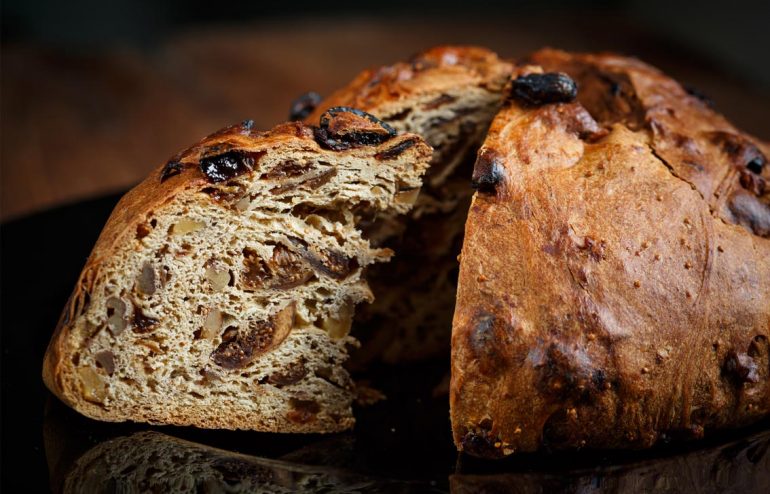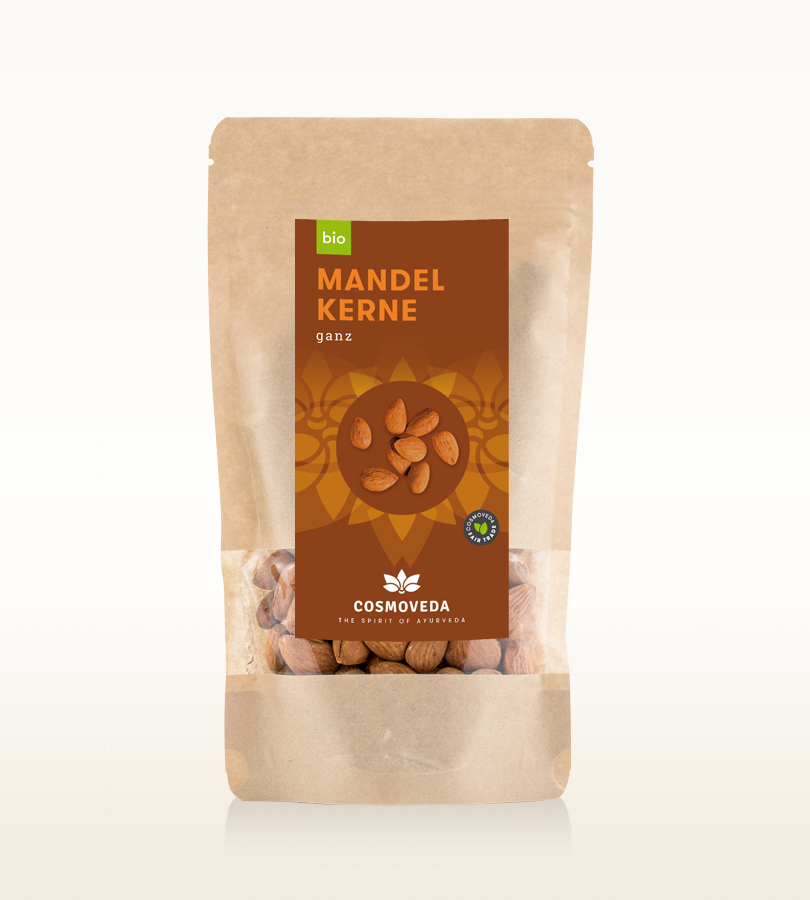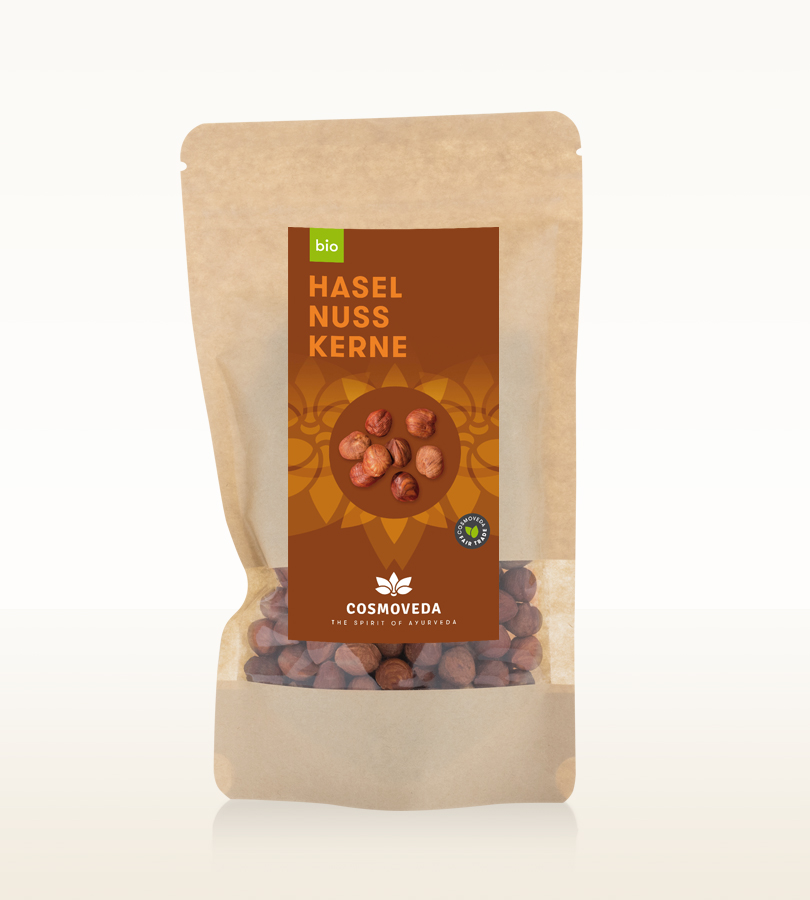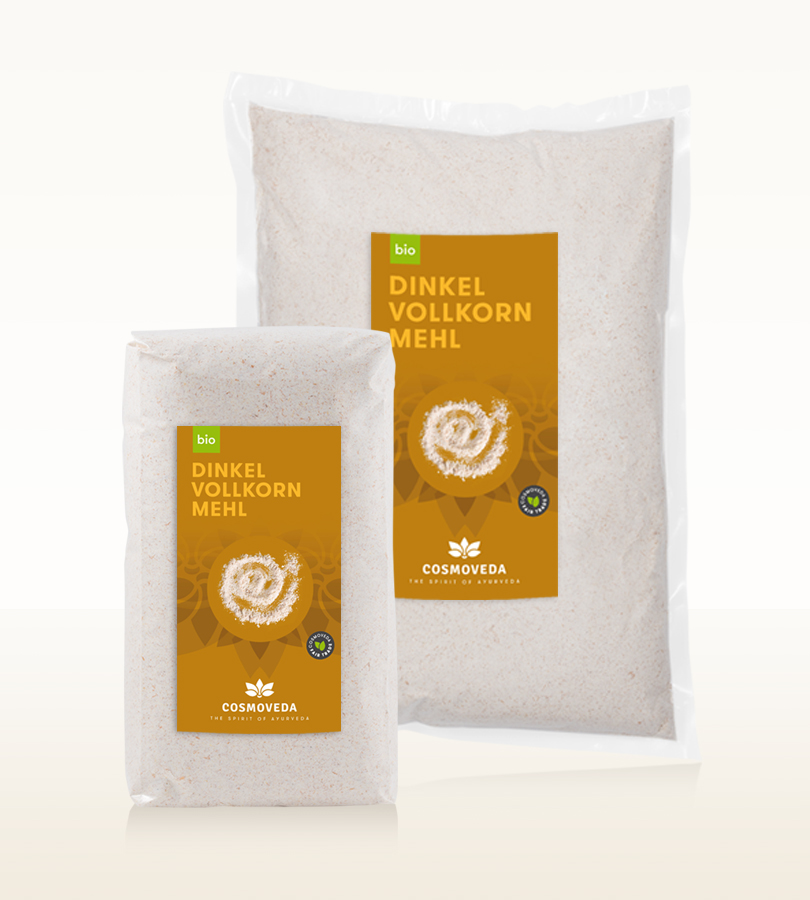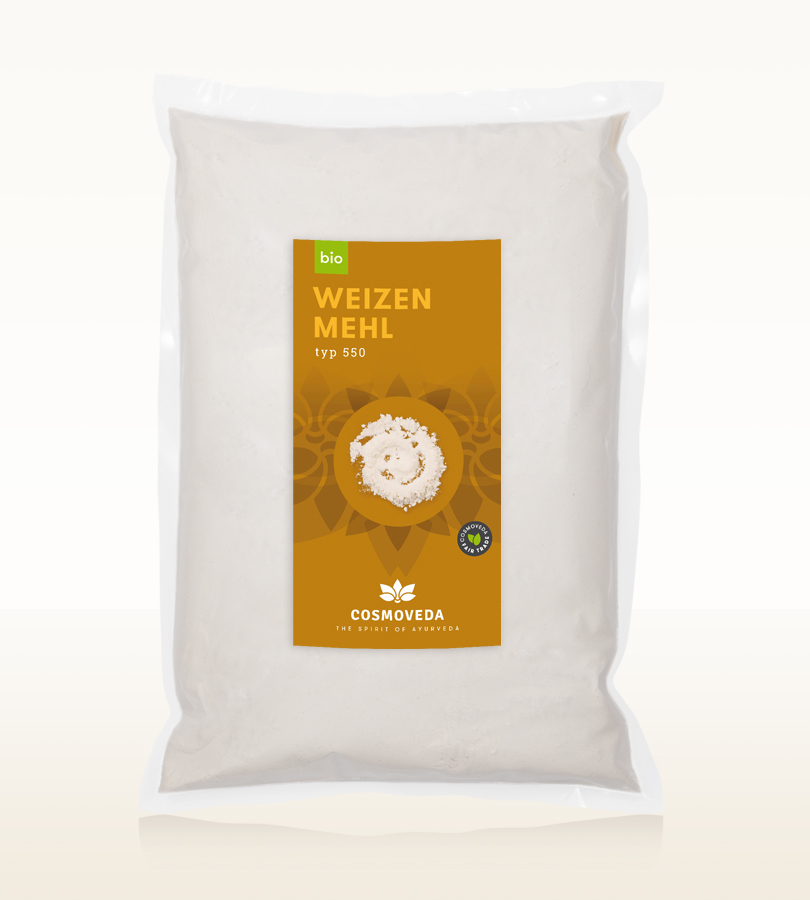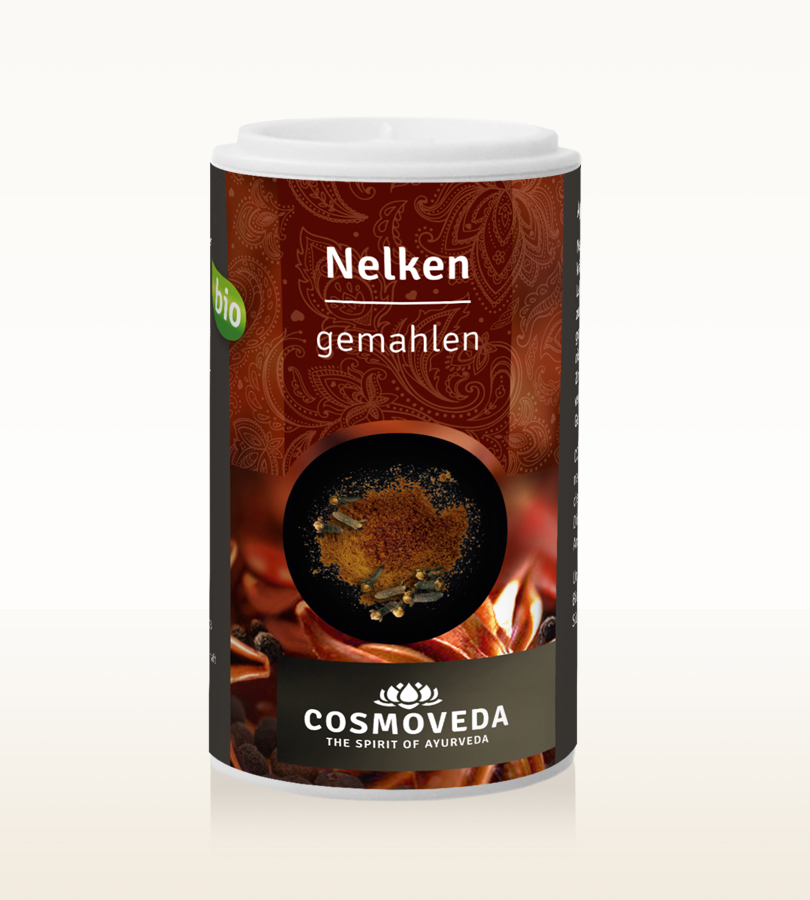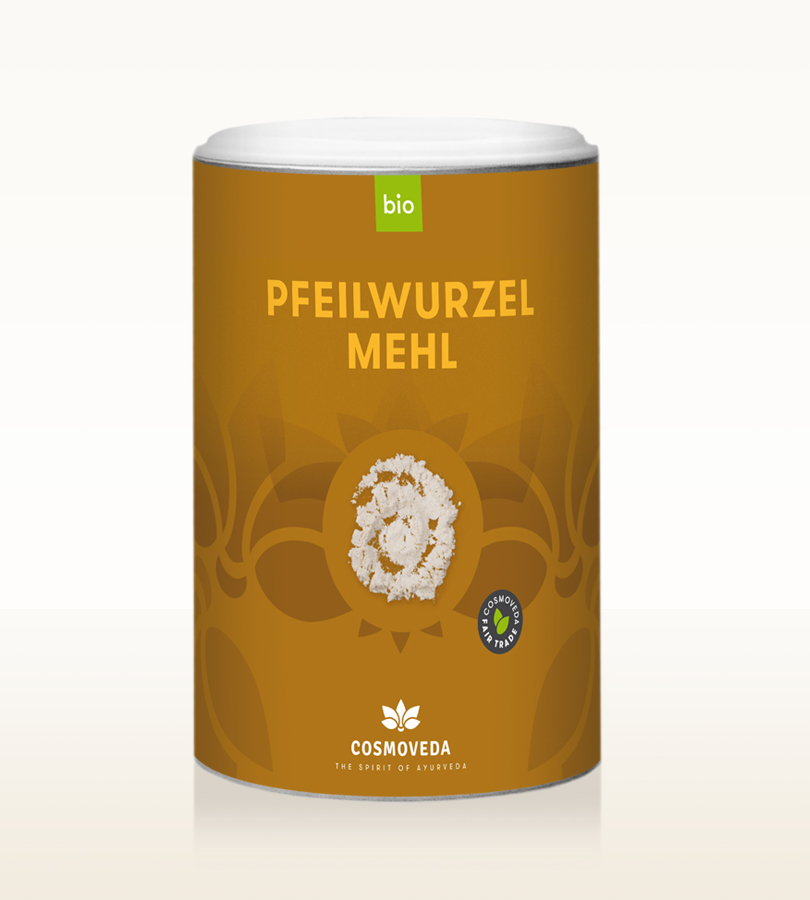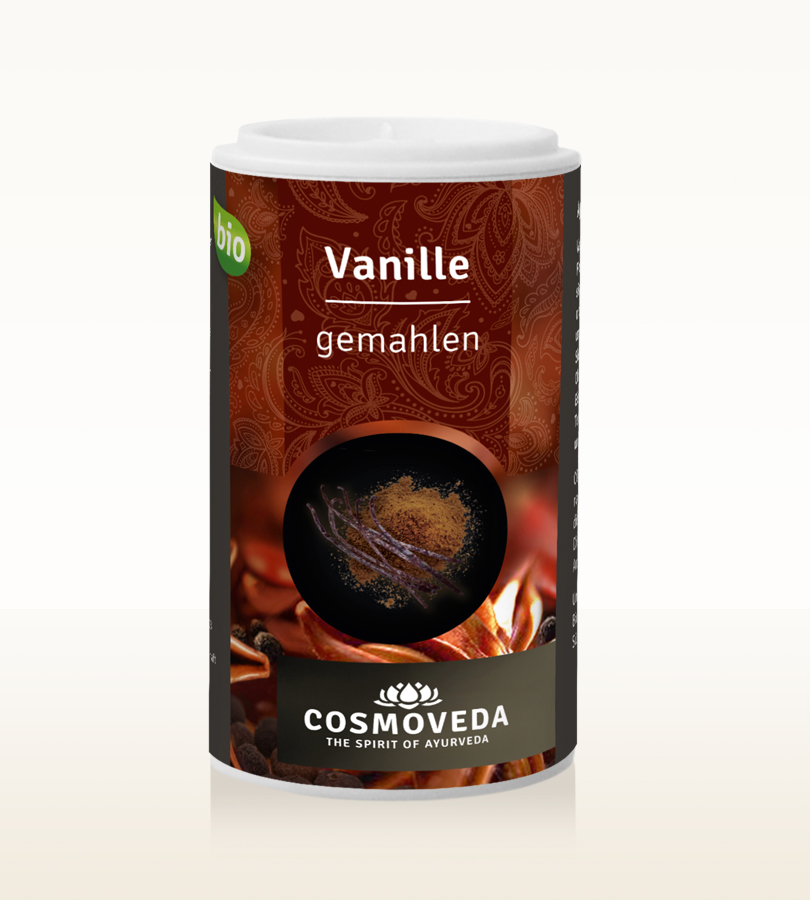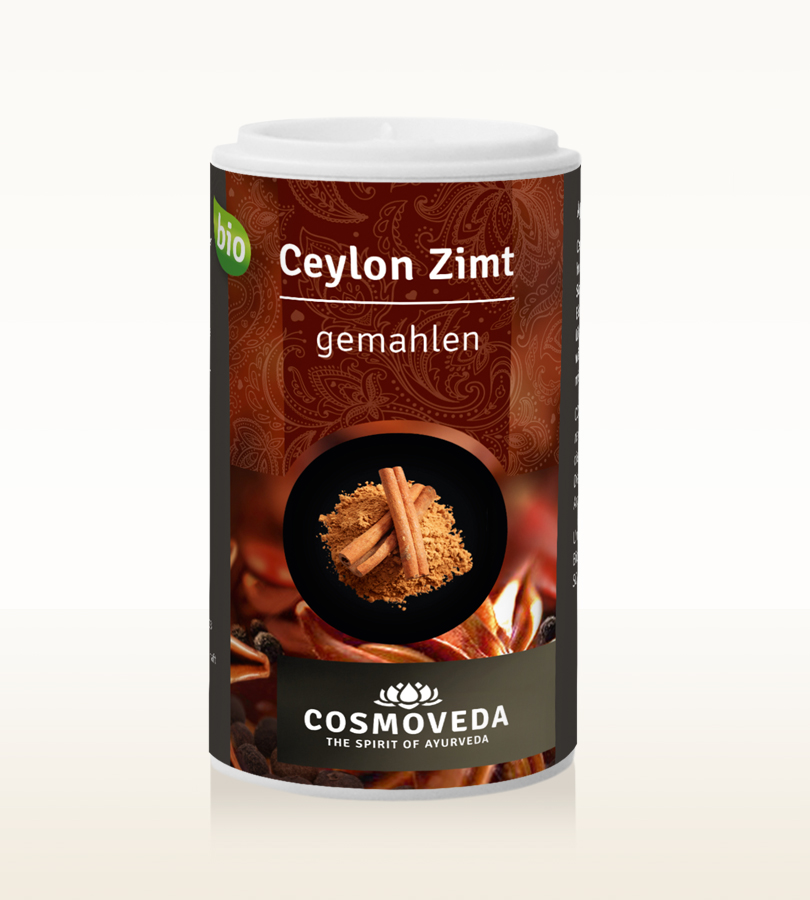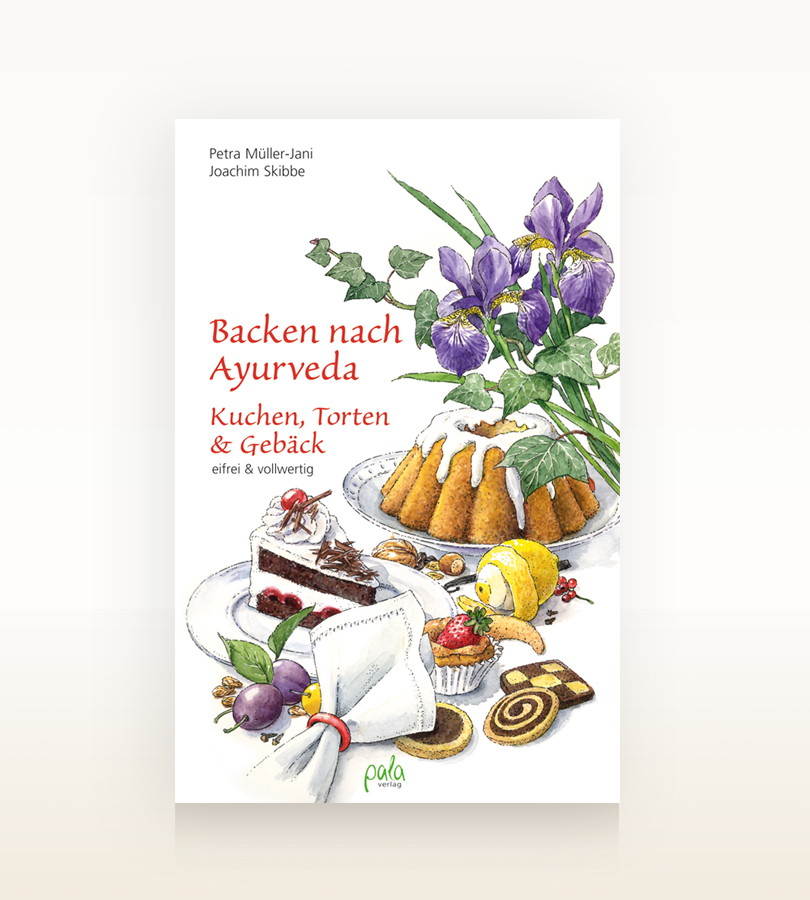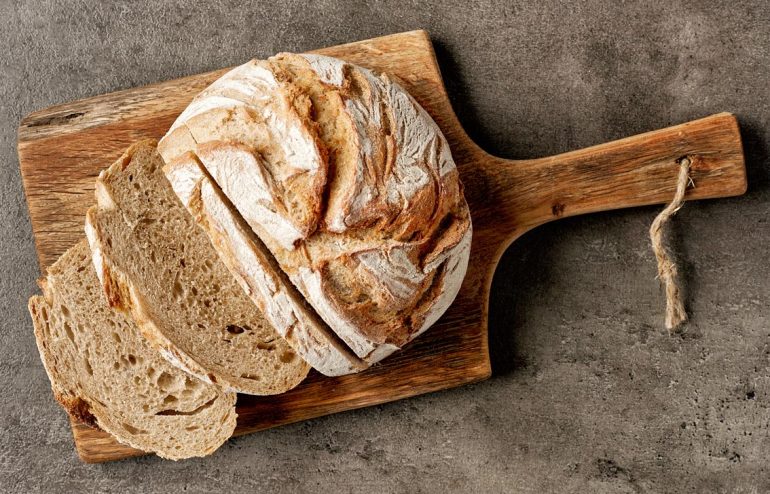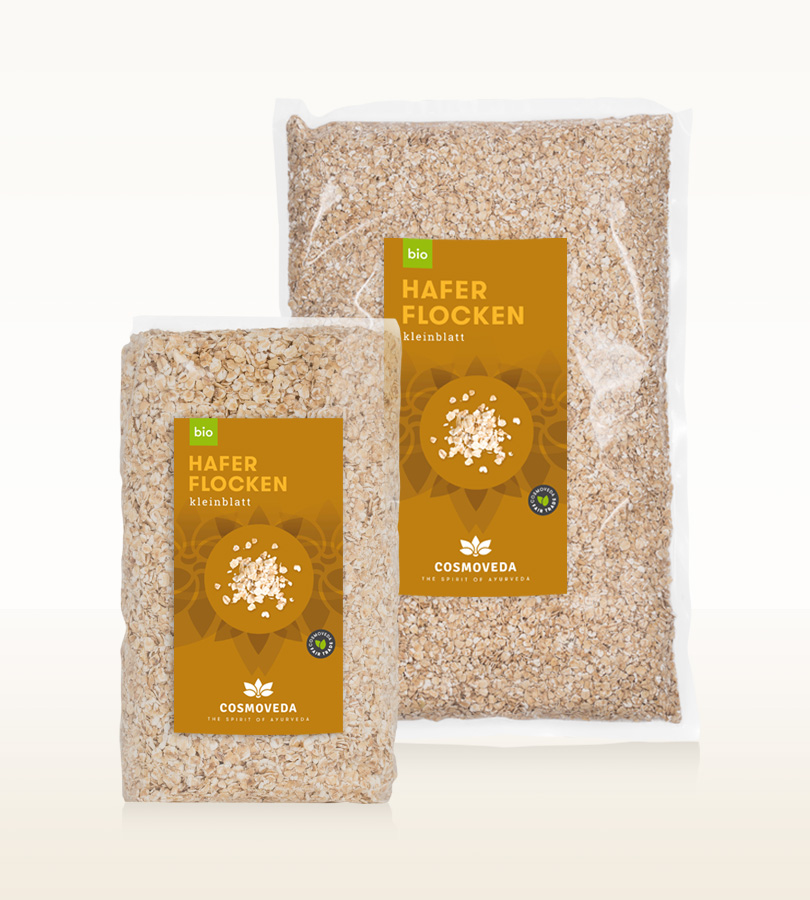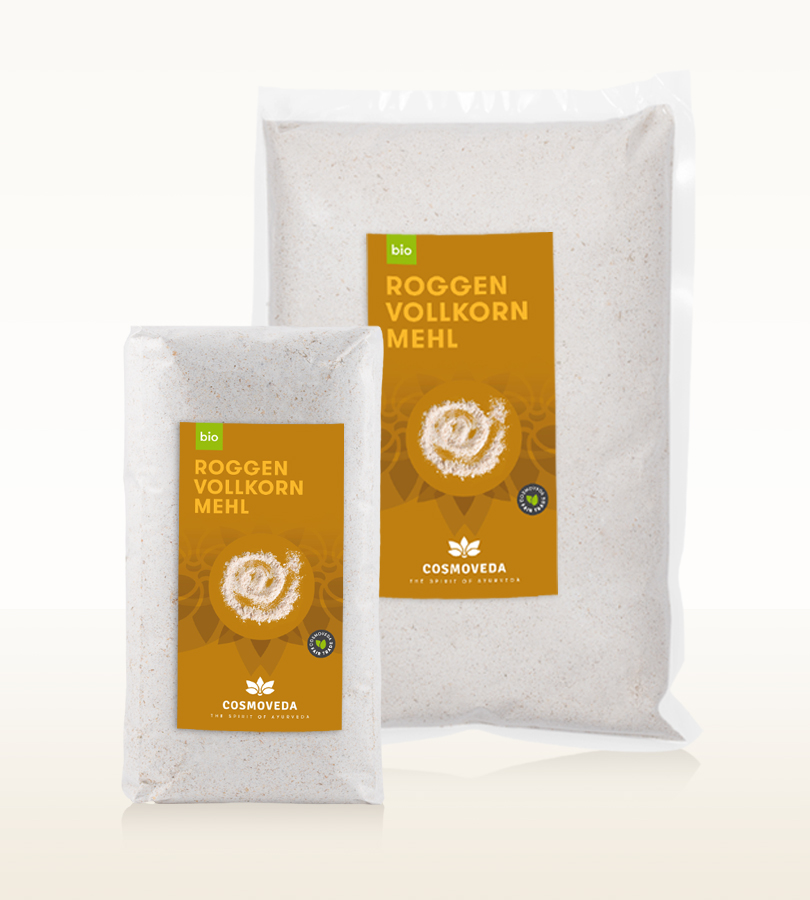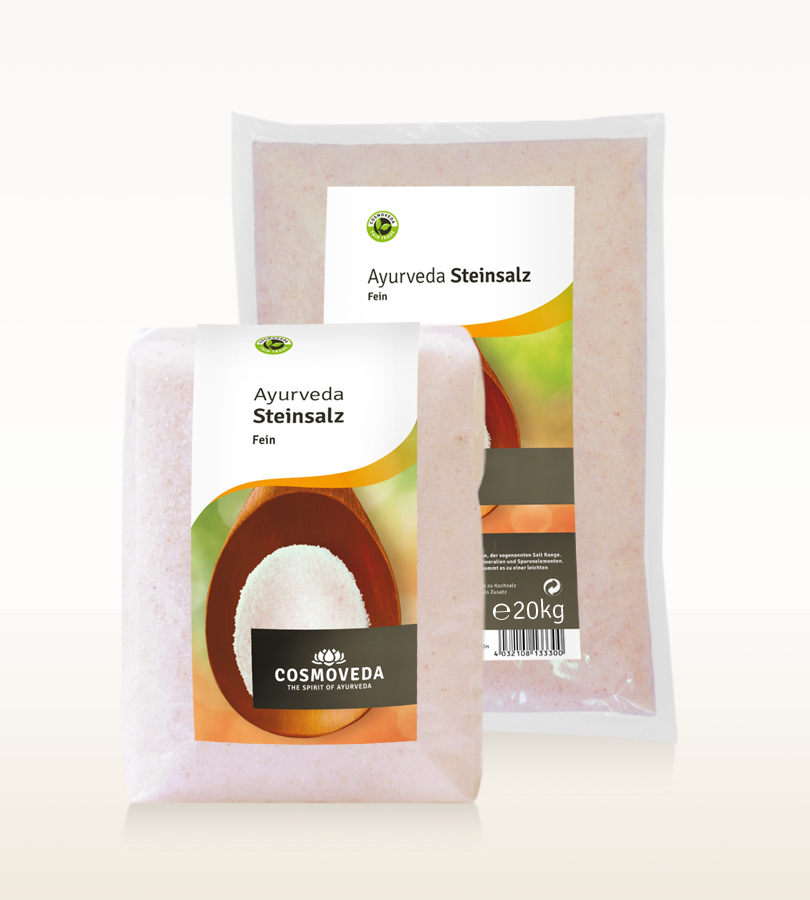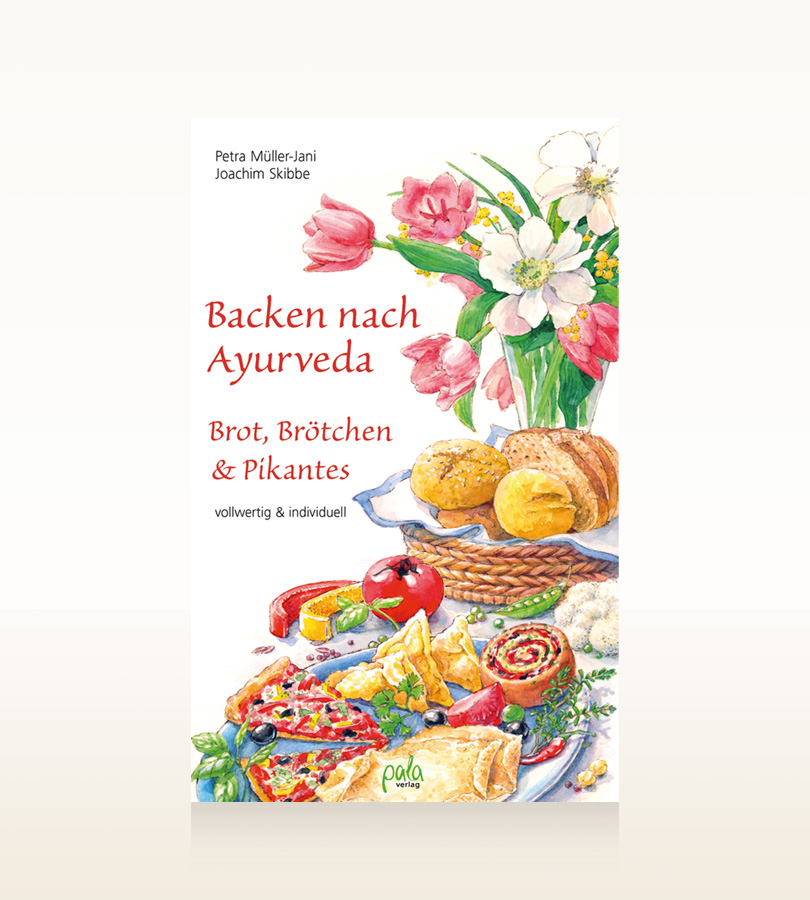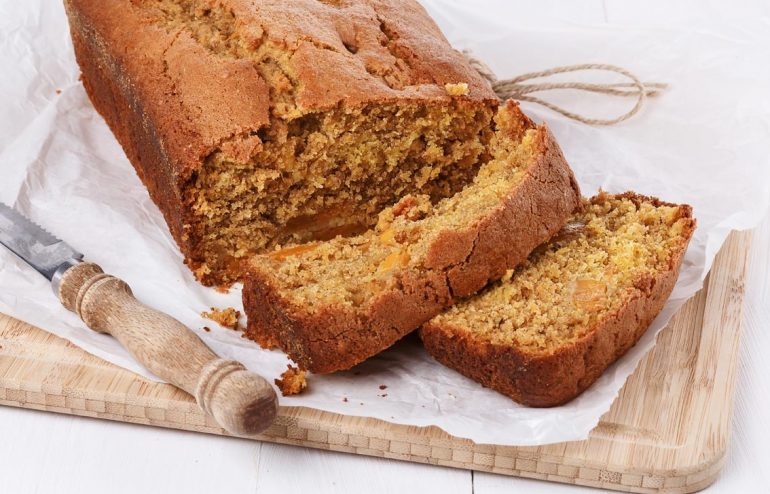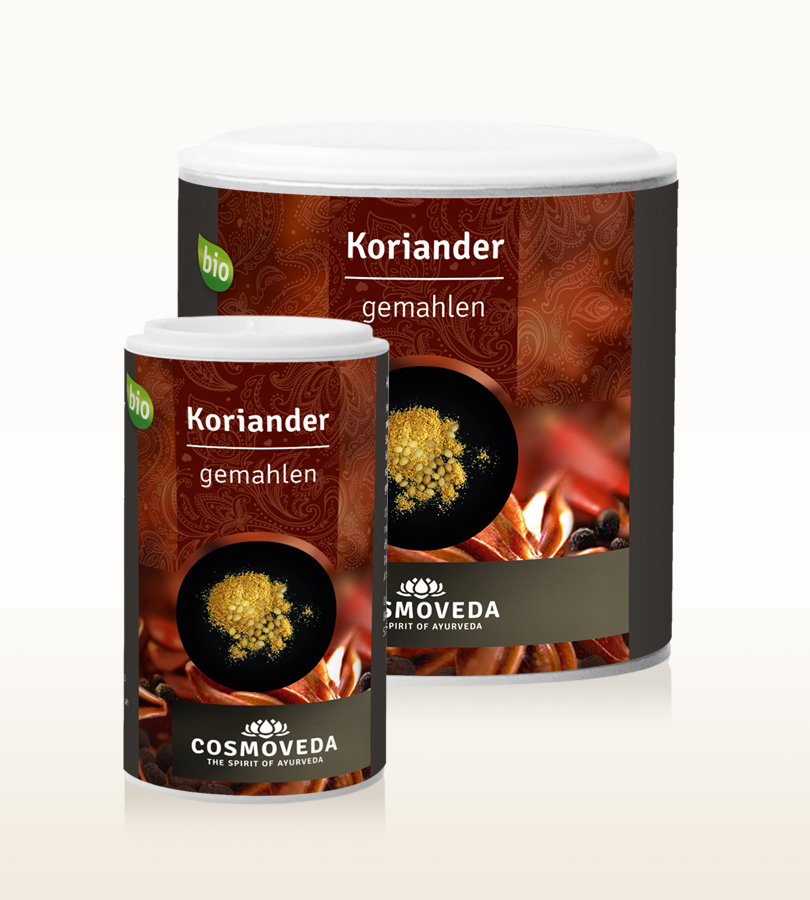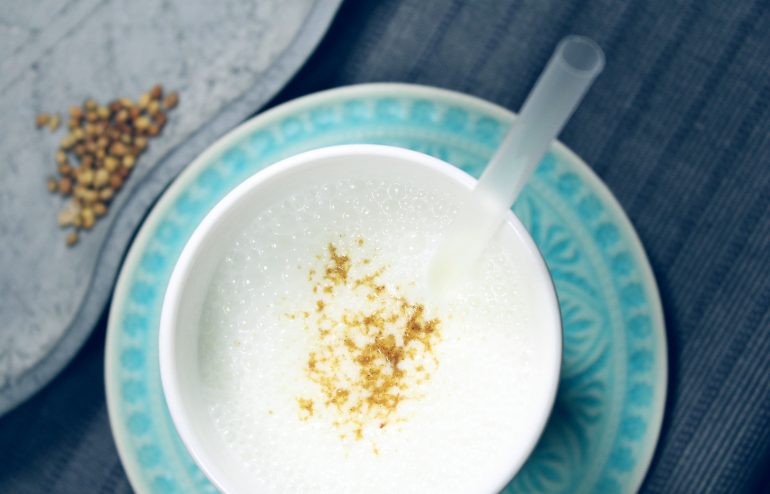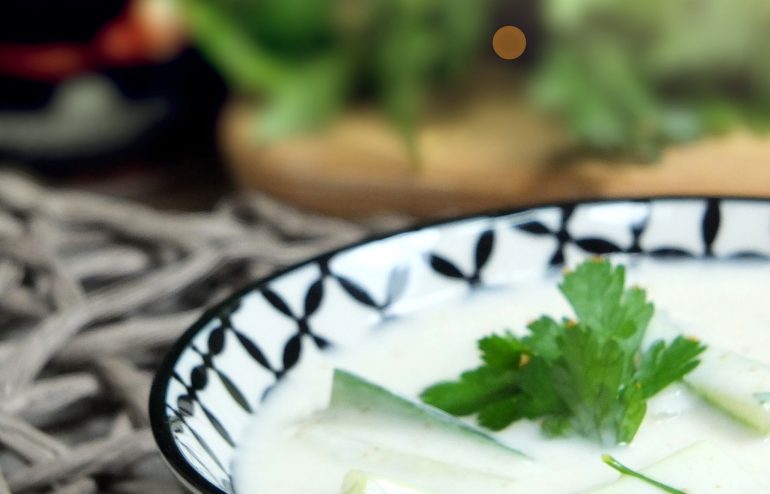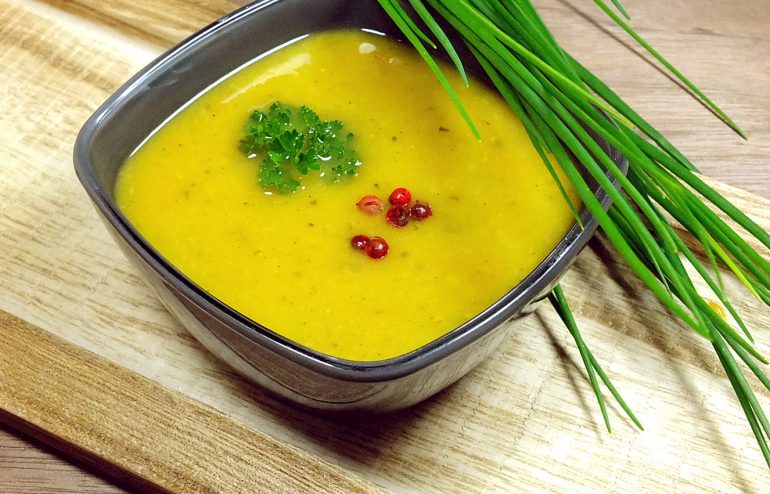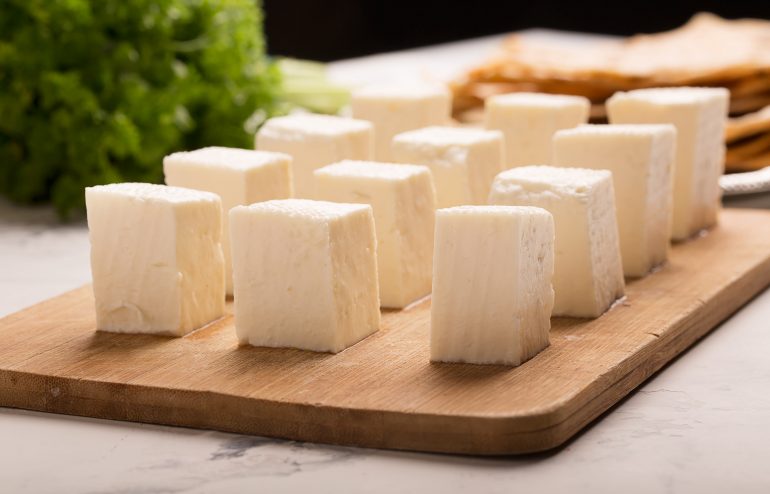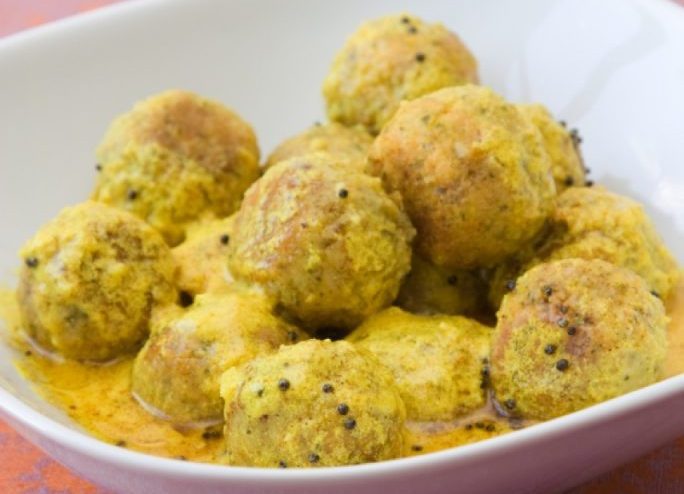Dried fruits increase the Vata element but soaking in water largely reduces that effect.
Figs are not only an important component of every fruit loaf, but also strengthen the blood due to high iron content. That makes them especially interesting to women who would like to rebalance their bodily elements.
From Nuremberg, the city that has known fruit loafs since the Middle Ages, comes this quick yeast-free recipe. Try it out.
Ingredients for a box baking tray
For the batter:
125 g raisins
125 g of dried figs
some hot water for soaking
125 g hazelnuts or almonds
100 g whole cane sugar
125 g finely ground spelt or wheat
5 teaspoons of homemade baking powder (see info box)
1 teaspoon ground bourbon vanilla
1 teaspoon cinnamon
1 knife tip of clove powder
3 tablespoons of yoghurt (or fruit juice)
3 – 4 teaspoons of fruit juice (e.g. elderberry juice)
60 g chopped orange or lemon peel
Homemade baking soda
If you really want to do your health a favor, we recommend simply making baking soda by yourself. Instead of harmful inorganic phosphates, this baking powder contains pure vitamin C powder (ascorbic acid) as an acidulant. Vitamin C neutralizes the lye flavor of soda; its vitamin content is lost at the high baking temperatures. Additionally, you need sodium bicarbonate as a stimulant, also known as soda, and wild arrowroot or corn starch as a release agent. The ingredients are available at the health food store, supermarket or pharmacy. All the recipes in this book were made with home-made baking powder.
The following table indicates ratio of mixed ingredients. Essentially, the mixing ratio is always one part of soda to two parts wild arrowroot or corn starch and two parts of vitamin C powder. It is important that you always freshly make the baking powder when needed. Unfortunately, it cannot be stored; it forms lumps over time.
Homemade baking powder
5 teaspoons
2½ teaspoon
1¼ teaspoon
5 knife tips
2½ knife tip
Sodium
(Baking soda)
1 teaspoon
½ teaspoon
2 knife tips
1 knife tip
2 pinches
Wild arrowroot/cornstarch
2 teaspoons
1 teaspoon
½ teaspoon
2 knife tips
1 knife tip
Vitamin C
(Ascorbic acid)
2 teaspoons
1 teaspoon
½ teaspoon
2 knife tips
1 knife tip
corresponds to conventional baking powder
= 1 packet
= ½ packet
= 2 teaspoons
= 1 teaspoon
= ½ teaspoon
Preparation
1) Grease box baking tray. Wash raisins and figs and soak in hot water. Preheat the oven to 190°C(E)/ 175°C (H).
2) Finely grate half the nuts or almonds, chop the other half. Sieve whole cane sugar. Mix the spelt flour, baking powder, whole cane sugar, bourbon vanilla and spices in a bowl and mix with yoghurt and fruit juice (or only fruit juice) to a smooth mass.
3) Cut the figs into thin strips and lightly flour figs raisins. Mix with the orange or lemon peel and place it into the tray. Pour batter over it.
4) Bake for 60 minutes and leave for additional 10 minutes in the switched off oven.
5) Turn slightly cooled fruit loaf onto wire rack.
Source: Petra Müller-Jani / Joachim Skibbe: Ayurvedic Baking – Cakes, Pies & Pastries, Pala-Verlag

